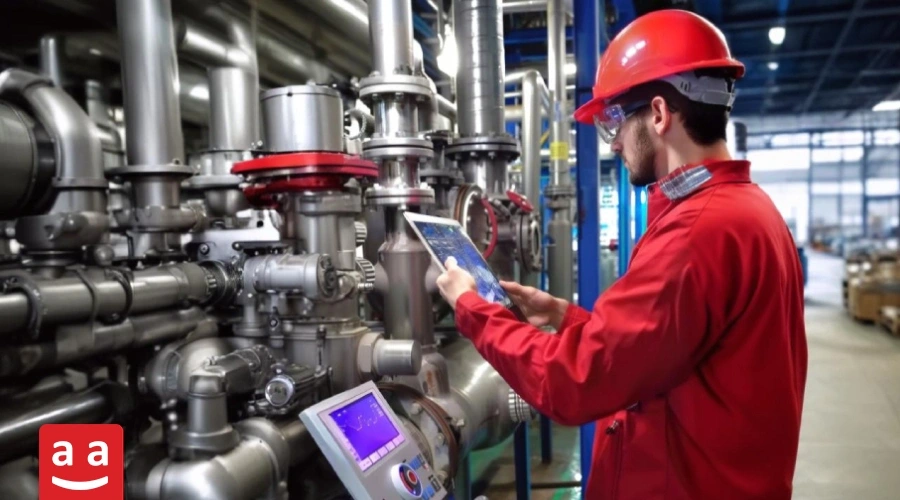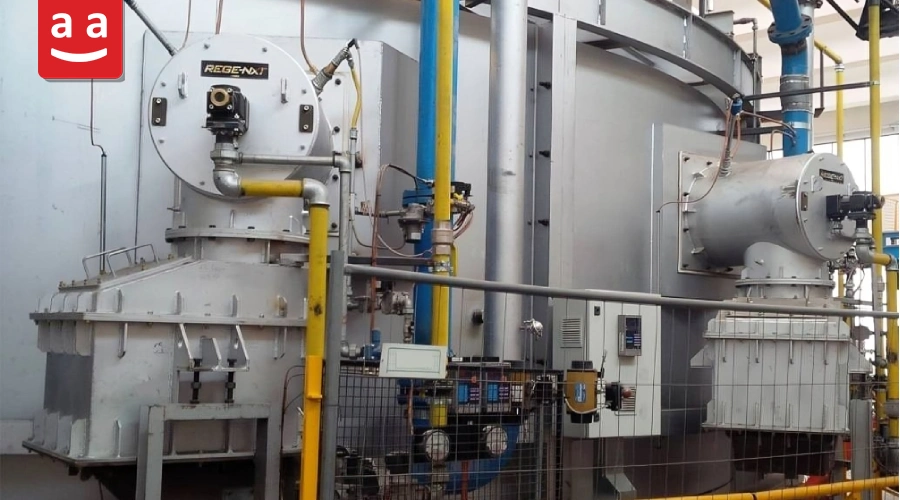Fired heaters stand out as one of the most crucial heating systems in petrochemical and chemical industries. They serve a critical role in industrial operations, primarily by supplying heat required for heating process fluids like hydrocarbons. Due to their significant impact on energy consumption, optimal design and operation of these systems can help lower operational costs and enhance energy efficiency in industries.
Fired heaters hold critical importance, being integral to nearly every petrochemical facility due to their essential role in various chemical processes. Beyond supplying heat, they contribute to optimizing fuel efficiency and minimizing emissions. Their design and manufacturing are governed by stringent standards to ensure optimal performance, safety, and reliability.
This article provides a comprehensive review of fired heaters. Initially, the functionality of these devices and their key components are explained. Subsequently, the article covers the different types of fired heaters and their design in accordance with international standards like API-560 and ISO-13705. Finally, the importance of fired heaters in reducing energy consumption and their role in the petrochemical industries is discussed.
What Does a Fired heater Do?
In chemical industries and petrochemical plants, fired heaters are used to heat process fluids, such as hydrocarbons. These systems directly use the heat produced by fuel combustion, a feature that explains their naming. Fired heaters are among the most significant consumers of fuel and energy in industries, accounting for 37% of the total energy used in manufacturing industries in the United States.


How Does a Fired heater Operate?
A fired heater, depending on its size, is equipped with one or multiple burners that supply the necessary energy by combusting fuel. Along the walls and inside the fired heater, there are numerous tubes through which the process fluid flows. The fluid absorbs heat generated by the burners via three mechanisms—radiation, convection, and conduction—until it reaches the desired temperature.
Different Components of a Fired heater
Fired heaters are relatively large equipment made up of numerous parts and sections. They are designed and constructed in different varieties, but their overall operation is similar, and their main parts are generally the same. The key parts of a fired heater are outlined below.


Burner
One of the key components of a fired heater is the burner or burners, which are installed either at the floor or along the walls of the unit. These burners are responsible for burning fuel to supply the heat needed. Fired heater burners may utilize either a natural draft or a forced draft system.
If natural draft burners are used, the combustion air is supplied to the burner by the natural draft of the fired heater. This draft is generated by buoyant forces and the difference in density between the gases inside the fired heater and the surrounding air, and it is influenced by the height and temperature of the gases inside. Forced draft burners, on the other hand, use a fan to create the necessary airflow. More details about different types of fired heaters, concerning how airflow and combustion products are managed, will be discussed in the following sections.
The burners used in fired heaters may be installed either horizontally or vertically on the floor of the combustion chamber or on the walls. The four common burner installation configurations in fired heaters are shown in the figure below.


Raadman RFGB burners are specially designed for fired heaters to generate a flame with very low NOx emissions, ensuring that the flame does not impinge the walls and cause damage. These burners come in various sizes and can provide up to 8 MW of capacity in natural draft mode. They are also compatible with forced draft systems, allowing for higher capacity ranges.


Radiant Section
In the radiant section of the fired heater, the first phase of heat transfer from the burner flames to the process fluid occurs. It is made up of numerous pipes positioned either horizontally, vertically, or helically around the burners, and is surrounded by a refractory wall and insulation. The dominant heat transfer mechanism in this section is radiation, with heat being mainly transferred through radiation from the hot flame to the pipes. Depending on the fired heater’s design, about 55% to 85% of the necessary heat is received in this section.


Convection Section
The convection section is where the main heat transfer mechanism is convection, and its name reflects this. This section consists of a series of pipes that are positioned perpendicular to the flow of hot gases generated by combustion, following the radiant section. The process fluid first enters the pipes in the convection section, where it is preheated before flowing into the pipes in the radiant section. The combustion products exiting the radiant section, still at high temperatures, lose some of their energy in this section. As a result, their temperature is significantly reduced.


Shield Section (Shock Section)
Several rows of tubes are positioned between the convection and radiant sections to protect the convection section tubes from direct flame radiation. This area is referred to as the shield section.
Breeching and Stack
The combustion products, after passing over the coils in the convection section, are directed toward the stack and discharged into the atmosphere through it. The intermediate section between the convection section and the stack is called the breeching.
Walls
The outer layer of the walls is typically made of steel sheets. On the inner side, the walls and floor are coated with a layer of refractory and insulating materials. This design not only ensures resistance to the intense heat and high temperatures inside the fired heater but also minimizes energy loss.


Fired Heater Design Standards
Fired heaters in the oil and gas industry are typically designed in compliance with API-560 or its equivalent standard, ISO-13705. These standards outline detailed requirements and recommendations for the design, material selection, fabrication, inspection, testing, and commissioning of these systems.
For a deeper understanding of ISO-13705 and its specifics, please refer to the page related to the ISO-13705 standard.
API-RP-535, the recommended practice, is one of the most widely used documents in the design of burners for fired heaters, offering comprehensive set of technical recommendations and technical proposals concerning these burners.
Types of Fired Heater Configurations
Fire heaters are available in a variety of designs, with different structural configurations and arrangements for the radiant section tubes. The structure may be cylindrical or cubical, while the radiant section tubes can be positioned horizontally, vertically, helically, or in an arbor shape. Examples of these various fired heater configurations are shown in the figure below.


Airflow and Combustion Products in Fired Heaters
Fire heaters are classified into four categories based on the method of air and hot gas flow within the chamber:
Natural Draft: This is the most common design for fired heaters, which does not require a fan to generate airflow. In this method, the lower density of gases inside the heater compared to the surrounding air creates buoyant forces that drive the flow from bottom to top. This phenomenon, also known as the stack effect, draws air in from the bottom (the burner inlet) and expels combustion products through the stack outlet, the highest point of the fire heater. The intensity of the airflow is dependent on the temperature of the gases inside the heater and its height.
Forced Draft: In this method, air is drawn from the surroundings using a fan and directed into the burner inlet. The fan used in this system is called the FD fan (Forced Draft fan).
Induced Draft: In fired heaters with induced draft, a fan draws air from the outlet of the heater and vents it into the atmosphere. The fan used in this case is called an ID fan.
Balanced Draft: In these fired heaters, an FD fan is located at the inlet and an ID fan at the outlet, with both fans assisting in the movement of gas and air through the heater.


The Significance of Fired Heaters in Heating Processes within The Petrochemical Industry
Fired heaters play a crucial role in chemical and petrochemical industries, where they account for a significant portion of energy consumption. Optimizing fire heater performance can therefore lead to substantial reductions in energy consumption in these sectors. These systems generate heat by burning fuels such as natural gas and oil, which is then transferred to the desired process fluid. Fired heaters come in various designs, based on factors like the arrangement of pipes and the method used for generating airflow. Typically, the main components of a fired heater include burners, the radiant section, the shield section, the convection section, breeching, and the stack.
Raadman’s RFGB series burners are among the top choices for industrial fired heaters. These burners are specially engineered for such applications, ensuring efficient flame formation while producing significantly lower NOx emissions, offering much lower environmental impact compared to older burners.





